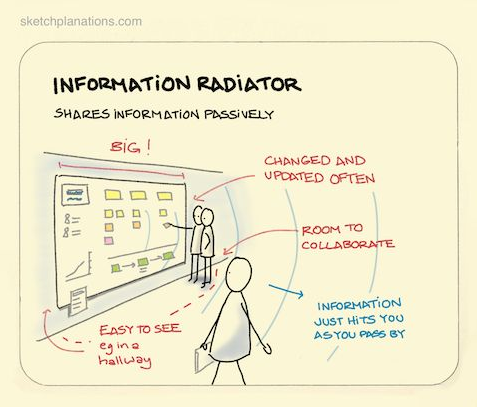-
Contributors
The Agile Dictionary is sponsored by Agile Learning Labs, and maintained by an amazing group of volunteers.
i is for...
Impediment
In the scrum framework, any obstacle preventing a developer or team from completing work. One of the focusing questions each member of a scrum team answers during the daily stand-up meeting is: What impediments stand in your way?
Impediments may include such things as:
- A meeting to attend
- A lack of technical expertise
- A technical issue (e.g. a network is down)
Scrum co-founder Ken Schwaber declared removing impediments to be “The scrum master’s top priority” in his 2002 book, Agile Software Development with Scrum.
Background Of The Term
The 2020 Scrum Guide mentions impediments in the section on Scrum Master and the section on Daily Scrum.
The Merriam-Webster Dictionary includes the following in its entry for the word impediment:
“Impediment comes from a Latin verb that meant ‘to interfere with’ or ‘to get in the way of progress’, as if by tripping up the feet of someone walking. In English, impediment still suggests an obstruction or obstacle along a path; for example, a lack of adequate roads and bridges would be called an impediment to economic development. Impediments usually get in the way of something we want. So we may speak of an impediment to communication, marriage, or progress–but something that slows the progress of aging, disease, or decay is rarely called an impediment.”
Further Learning
The Scrum Master as an Impediment Remover – Scrum.org – Barry Overeem
Posted in i
Leave a comment
Information Radiator
Also: Big Visible Charts
In agile software development the preferred way of displaying data visualizations is to post them on the wall in the team’s shared workspace (i.e., rather than logging them in a spreadsheet). Examples of information radiators include a burndown chart, a burnup chart, and a task board, although other types of charts are possible. These may also be referred to as Big Visible Charts.

An information radiator displays information in a place where passersby can see it. With information radiators, the passersby don’t need to ask questions; the information simply hits them as they pass.[1]
Keeping information visible at all times promotes transparency (one of the three pillars of scrum).
Background Of The Term
Alistair Cockburn coined the term “information radiator” in 2000 and introduced it in his 2001 book, Agile Software Development.
Further Learning
Information Radiators – Agile Alliance glossary
What makes a good information radiator – ThoughtWorks Australia, Lachlan Heasman – slide deck
Chapter 3: Communicating, Cooperating Teams – extract from Agile Software Development: The Cooperative Game (2nd Edition) by Alistair Cockburn
[1] From Agile Software Development (2nd Edition) by Alistair Cockburn, Chapter 3.
Posted in i
Leave a comment
Iterative Development
Related terms: Incremental Delivery, Evolutionary Development, Timeboxing
A project life-cycle strategy used to reduce risk of project failure by dividing projects into smaller, more manageable pieces of “potentially shippable” product delivered over the course of a series of brief iterations, or sprints. Iterative development processes afford teams the ability to “inspect and adapt” their processes between iterations, leading to continuous improvement. The concept of iterative development stands in contrast to the traditional, waterfall method of “big design up front” followed by development and testing in strict sequence.
The concept of iterative development is central to all agile frameworks and is regarded as an essential part of agile development. Extreme Programming recommends that teams make frequent, small releases, working in iterations of one to four weeks, with one week being the preferred interval. Scrum also recommends regular cycles, called sprints, of one to four weeks.
Background of the Term
The concept of iterative software development was described by Tom Gilb in his 1988 book, Principles of Software Engineering Management, where he referred to it as Evolutionary Development. It has gone on to permeate all agile frameworks.
Currently, iterative development is strongly associated with incremental development, but historically that was not always the case. See, for example, Barry Boehm‘s paper A Spiral Model of Software Development and Enhancement in which the model is iterative but not necessarily incremental.
Further Learning
Iterative Development – Agile Alliance – glossary entry
Iterative and incremental development – Wikipedia
Posted in i
3 Comments

